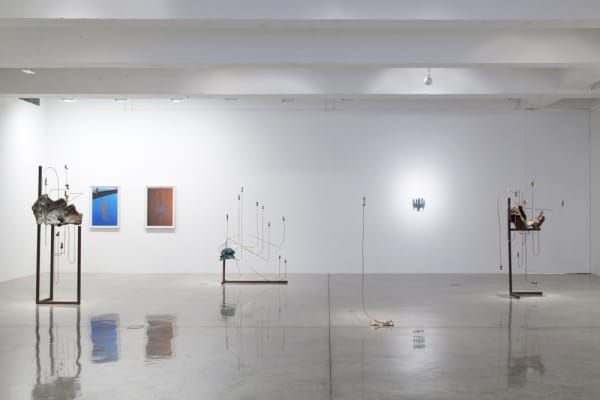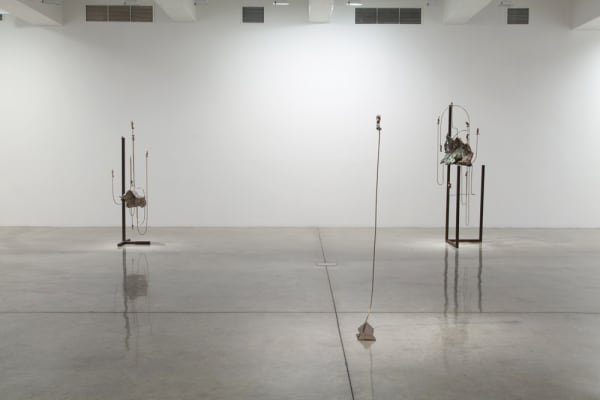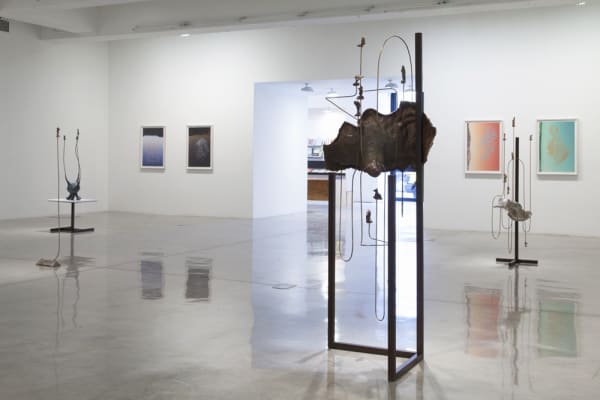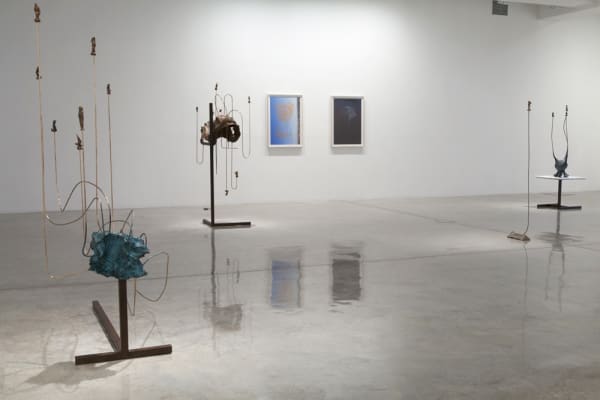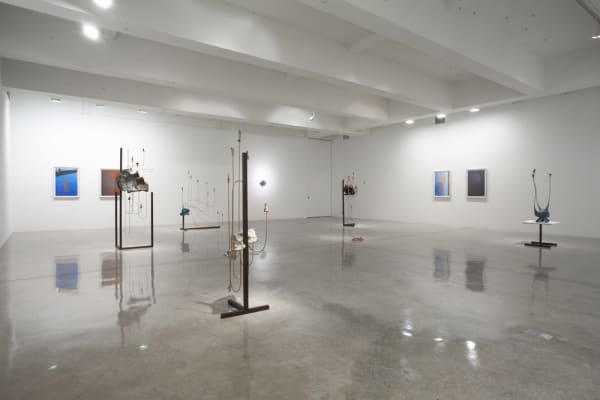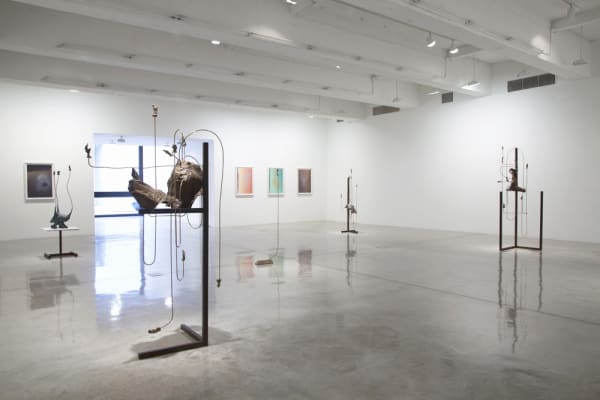Charles Long: Up Land: Tanya Bonakdar Gallery, New York
Tanya Bonakdar Gallery is pleased to announce a series of new bronze sculptures and pastel drawings on photographs by Charles Long. Entitled Up Land, the series marks Long’s tenth solo exhibition at the gallery.
The forms and imagery that populate Up Land emerge from the artist’s fusion of his studio process with musings on an eclectic range of cosmologies of the physical realm, from ancient mythologies to present day science and philosophy. While Long continues his specific investigation of the sculptural object, these new works venture into rich visual territory, from cosmic topographies giving birth to swarming figures to impossible objects poised in mid-air.
The seven bronze sculptures on view in Up Land were made using a modified version of the "lost wax" technique, a process of casting bronze that has been in use for over 5,000 years. Embarking on an improvisational handling of traditional sculptural material, Long developed these works directly in wax without using molds. Midwifing lumps of wax back and forth between liquid and solid states, Long attended to the emergence of archetypical icons, encouraged through shaping only to be disfigured again with a dip into the melting pot. This process yielded Long’s bronze forms that are suspended between states of becoming and dissolving.
Working at a small bronze foundry close to his studio in Southern California allowed the artist to include the metal casting process in the work’s cosmology. In Bluedral, a gang of figures remains locked in the vents, gates, and sprues used in the lost wax process, revealing the feeding tubes that carry molten bronze to replace the melted wax during casting. Another remnant of the casting process is preserved in Fée, where a solitary figure rises up out of the partially melted pyramid formed from a triangular ingot, a traditional storage unit of bronze used in casting.
The central forms in larger works like Kuex, Quisquose, and Thais originated from thick crusts of wax that Long imprinted with found objects to yield abstract imprints resembling sedimentary layers, honeycombs, reptilian scales and even feathers. Heating and draping further abstracted these forms into topographic shells, which were then cast in bronze. From these central metal landscapes emerge a multitude of figures, orbiting the mass like quantum particles. These particulate paths are charted elegantly in looping bronze rods, as the forms spiritually rise from their geological origins to arc and bow into space.
The resulting sculptures are at once abstract and figurative, with tendrils that extend out from a terrestrial mass and sprout mysterious anthropomorphic buds, which Long refers to as "monads." The monads, a term coined by philosopher Gottfried Leibniz to describe elemental substances, appear in other series by Long, referencing that which is neither solely object, nor being, nor idea but an utterly unique unit. In Leibniz’s cosmology there are an infinite number of monads, which together compose reality while also functioning as a microcosm within it. In each of Long’s sculptures, the monads, tendrils and landscapes take their specific form, even though the sculpture is fashioned from one continuous piece of metal, passing through different configurations and textures as they distend from the center of the work.
If the sculptures model a cosmology where the physical is seen metamorphosing from inchoate material into something capable of consciousness, the drawings on view flaunt a disconnect which may conceal such flow or deny it all together. As a foundation for the works, Long uses digital enlargements from snapshots of the sky and horizon around his Upland, California studio. To these photographs, Long applies crisply drawn abstract imagery developed from indistinct sketches he unearths in his journals and sketchbooks. Gradually pulverizing pastel pigment into the open void of the sky, intricate textures appear to hint at the light and shadow of an imagined object suspended in mid-air, which the artist may articulate fully or leave partially formed. Brilliantly hued, ethereal and abundant in detail, Long’s floating pastel objects confront the banality of their surroundings, inspiring inquiry into what the artist has called “the additive evolution of the unknown.”
Charles Long's work was exhibited earlier this year at Jarla Partilager in Berlin and also at The Contemporary Austin’s Jones Center, where Long presented the immersive environmental installation CATALIN in addition to an outdoor presentation of his Pet Sounds, originally shown in New York City’s Madison Square Park in 2012. Other recent shows include a 2011 solo presentation entitled Seeing Green, in conjunction with the exhibition All of This and Nothing: 6th Hammer Invitational; The Uncertainty of Objects and Ideas: Contemporary Sculpture, at the Hirshhorn Museum and Sculpture Garden, Washington, DC (group 2006); 100 Pounds of Clay, Orange County Museum of Art, Newport Beach, CA (solo 2006); Gone Formalism, Institute of Contemporary Art, Philadelphia, (group 2006); and More Like a Dream Than a Scheme, David Winton Bell Gallery, Brown University, Providence, RI, traveled to SITE Santa Fe (solo 2005). In addition to being featured in the 2008 Whitney Biennial, Long has received the American Academy of Arts and Letters "Award of Merit Medal for Sculpture."
All installation images above: Photo by Jean Vong


